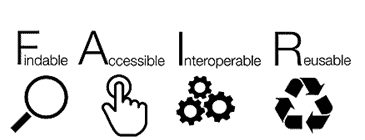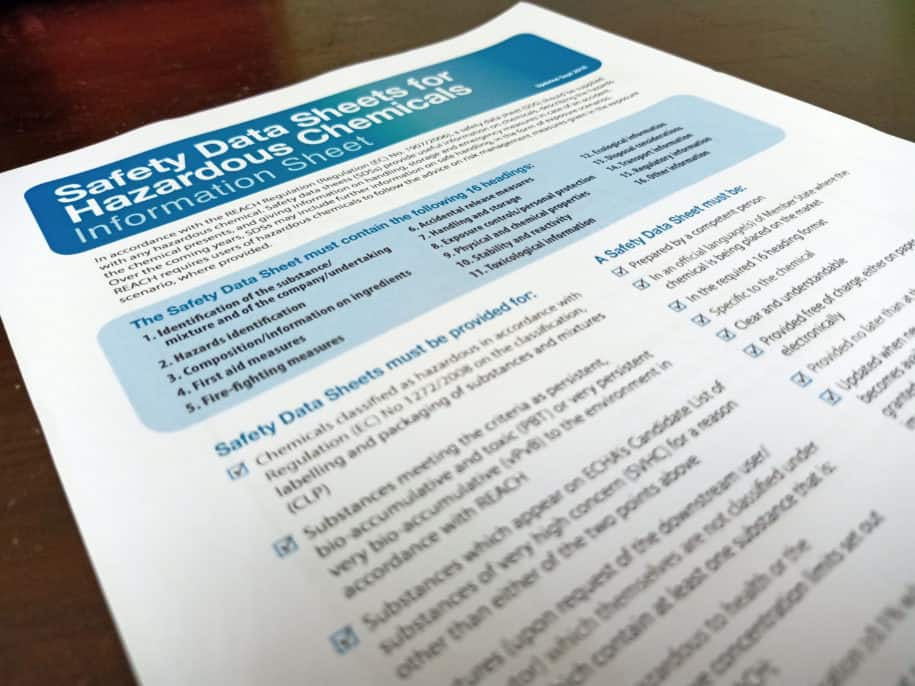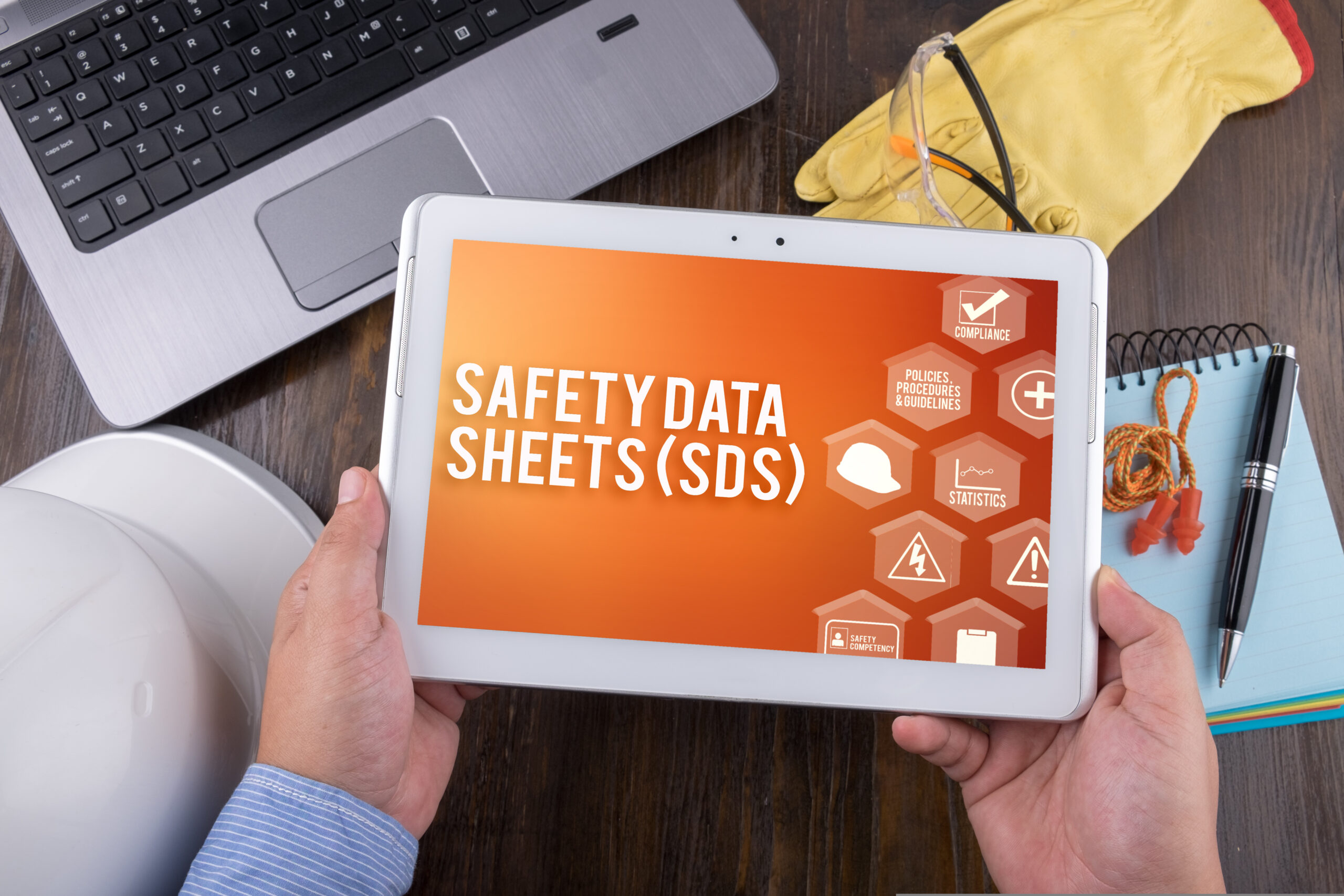Last month, I discussed the reasons for, and challenges of, instituting a chemical inventory system in your workplace. One of the regulatory drivers for such a system is the OSHA Hazard Communication standard. This standard requires employers to:
- maintain an inventory of hazardous chemicals in the workplace
- collect and share GHS-compliant safety data sheets (SDS) that describe the hazards of these chemicals with their employees
- train their employees who are potentially exposed to these hazards in how to manage these risks.
Clearly, this program requires good ongoing information about the chemicals found in the workplace.
However, simply knowing that you have a gallon of a chemical in your workplace does not make it easy to acquire a SDS for that chemical. That is because each vendor provides a different route for accessing their safety data sheets. Some vendors provide access to their SDS library through their website but require that the website visitor to register or demonstrate that they are a customer before they will share the SDS. Other vendors make SDS information publicly available in a scanned PDF format. While this prints nicely on paper, these SDSs which can be difficult to work with electronically.
For example, if you want to find the flashpoint of a chemical, scanned PDF files have to be read by people rather than a computer application. This is because the reader must 1) find the section of the SDS that contains this information, 2) collect the numeric value for the flashpoint and 3) identify what units this temperature is being reported in. This task is straight forward for trained humans but can be a significant challenge for software programs because of unpredictable variations in SDS formatting.
Ideally, safety data will be shared in a modular form that allows the user to collect the specific data they are interested. An example of system that uses this approach is PubChem from the National Library of Medicine. PubChem collects data from many sources and allows specific data fields in its collection to be downloaded via an API connection as well as displayed on a web page.
This type of data organization problem is not limited to Safety Data Sheets; it is also found in many other settings. For this reason, a group of information professionals has been working for a decade to define how electronic information can be most effectively shared and repurposed.
They have summarized their work in the FAIR data principles. These principles state that electronic data should be Findable, Accessible, Interoperable and Reusable. Let’s see how PubChem safety information addresses these criteria:
Findability: PubChem data can be searched either by humans browsing the PubChem web site or by software using programmatic access. These searches can use many different chemical identifiers (common names, synonyms, CAS numbers, INCHIs, etc.). And the data for each chemical is presented in a modular format so that specific fields can be downloaded as needed rather than an entire SDS at once.
Accessibility: Because it is government-sponsored, use of the PubChem is openly available at no cost to the user.
Interoperable: An important feature of PubChem’s safety information is that collects GHS information from a variety of global sources, including collections from Japan, Australia, and the European Union. This means that the user can compare information from different locations to determine whether the data being presented from different sources agrees with each other. Such comparisons can help the user assess the value of the information being collected.

Reusable: For safety information to be reusable in different situations, the user must review the source of the data to understand the assumptions that have gone into the data collection. For example, because EPA and OSHA use different flashpoint temperatures to determine if a chemical should be designated “flammable”, checking where the data comes from is necessary to reuse this information. PubChem includes references to the source of all data that it presents so that users can make this assessment.
PubChem has been in development by the National Library of Medicine since 2004 and collects many kinds of data for millions of chemicals beyond safety information. For this reason, its staff has implemented the FAIR principles over time and been able to set an example as a state-of-the-art safety data source.
While not every employer will be able to implement a system as sophisticated as PubChem for its chemical information system, the FAIR framework provides a way to identify ways that you can improve your chemical information system, particularly when it comes to organizing chemical safety information such as SDSs.
For more details: Click here & Contact SafetyStratus Now
AUTHOR BIO

Ralph Stuart, CIH, CCHO is the Environmental Safety Manager at Keene State College in Keene, NH. He has over 30 years of experience in addressing Indoor Air Quality concerns and optimizing laboratory ventilation for safe energy conservation. He is the past chair of the American Chemical Society’s Committee on Chemical Safety.



